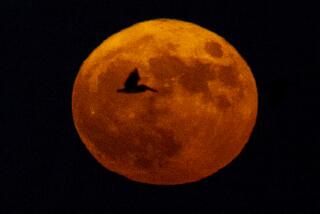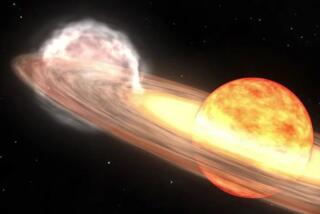The Quadrantids meteor shower is here! Here’s the peak viewing time for SoCal

- Share via
- The annual Quadrantids meteor shower is hitting peak visibility, with around 25 meteors per hour, one expert says.
- Southern Californians’ best viewing time should be Friday night heading into Saturday morning.
Shooting stars darting across the darkened Southern California skies from an annual meteor shower will appear strongest over the next two days. Prime viewing starts Friday morning and continuing into Saturday, according to astronomical observers.
The annual Quadrantids meteor shower will hit peak visibility, particularly in the Northern Hemisphere with around 25 meteors per hour, according to Ed Krupp, director of Griffith Observatory.
“What you’re going to need is a little bit of patience because that translates into one every couple of minutes,” Krupp said. “They aren’t systematic and don’t run on a clock, but when they appear overhead, people do enjoy them.”
When the meteor shower will be most visible varies according to region.

Krupp said peak visibility for Southern California will take place Friday night heading into Saturday morning, from roughly midnight to 5:30 a.m., possibly 6 a.m.
Around 10 p.m., you can find the meteor shower by locating the constellation Boötes, which Krupp said can be seen by looking in a northeastern direction.
By 3 a.m. the showers will be nearly overhead, Krupp said.
The director said that binoculars or a telescope are unnecessary and a potential hindrance because they narrow a stargazer’s field of view.
A rare meteor shower will peak late Tuesday when a short celestial outburst is predicted to occur, illuminating the night sky with streaks of light.
“The best observations are made with just your eyes, which offer great CinemaScope viewing,” Krupp said.
What is recommended for best viewing is finding a dark area away from cities and light pollution. NASA is suggesting those heading outdoors should pack winter weather gear along with a sleeping bag, blanket or lawn chair.
Krupp suggested desert viewing would be ideal.
The American Meteor Society predicts the shower to be strongest at 9:45 a.m. Friday, which means Pacific island communities probably would enjoy the best show.
Next year’s events that are visible to Californians include a rare peek at Mercury; Venus and Jupiter cozying up; and a total lunar eclipse.
The source of the meteor shower is a bit ambiguous, according to Krupp.
The asteroid 2003 EH1, discovered in 2003 by research scientist Peter Jenniskens, is believed to be behind the shooting stars.
Krupp said it’s not certain whether 2003 EH1 is indeed a meteor or a “dead comet,” which means the celestial body has lost its volatile ice and gas that create the glowing tail.
Since best viewing is away from cities and light, Krupp said the observatory is not hosting any special viewing events.
More to Read
Sign up for Essential California
The most important California stories and recommendations in your inbox every morning.
You may occasionally receive promotional content from the Los Angeles Times.













